
Warren Hastings was a British colonial administrator, who served as the first Governor of the Presidency of Fort William (Bengal), the head of the Supreme Council of Bengal, and so the first Governor-General of Bengal in 1772–1785. He and Robert Clive are credited with laying the foundation of the British Empire in India. He was an energetic organizer and reformer. In 1779–1784 he led forces of the East India Company against a coalition of native states and the French. Finally, the well-organized British side held its own, while France lost influence in India. In 1787, he was accused of corruption and impeached, but after a long trial acquitted in 1795. He was made a Privy Councillor in 1814.
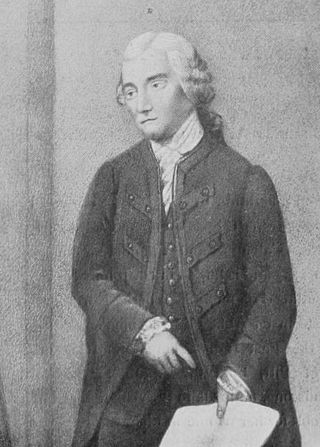
John Zephaniah Holwell was a surgeon, an employee of the British East India Company, and a temporary Governor of Bengal (1760). He was also one of the first Europeans to study Indian antiquities and was an early advocate of animal rights and vegetarianism.

The Battle of Plassey was a decisive victory of the British East India Company, under the leadership of Robert Clive, over the Nawab of Bengal and his French allies on 23 June 1757. The victory was made possible by the defection of Mir Jafar, Nawab Siraj-ud-Daulah's commander in chief. The battle helped the British East India Company take control of Bengal in 1772. Over the next hundred years, they continued to expand their control over vast territories in rest of the Indian subcontinent, including Burma.

Siraj-ud-Daulah was the last independent Nawab of Bengal, reigning from 1756 to 1757. The end of his reign marked the beginning of the rule of the East India Company over Bengal and later almost all of the Indian subcontinent.

Fort William is a fort in Hastings, Calcutta (Kolkata). It was built during the early years of Britain's administration of Bengal. It sits on the eastern banks of the River Hooghly, the major distributary of the River Ganges. One of Kolkata's most enduring British-era military fortifications, other than those in Bombay (Mumbai) and Madras (Chennai), it extends over an area of seventy hectares.
Kolkata (Calcutta) was a colonial city. The British East India Company developed Calcutta as a city by establishing an artificial riverine port in the 18th century CE. Kolkata was the capital of the British India until 1911, when the capital was relocated to Delhi. Kolkata grew rapidly in the 19th century to become the second most important city of the British Empire after London and was declared as the financial (commercial) capital of the British India. This was accompanied by the development of a culture that fused Indian philosophies with European tradition.

Admiral Sir Richard King, 1st Baronet was a British naval officer and colonial governor.
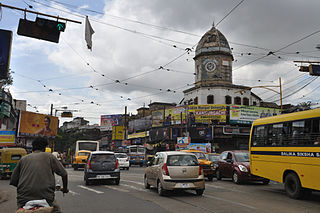
Maniktala is a residential area of North Kolkata, in Kolkata district, West Bengal, India.
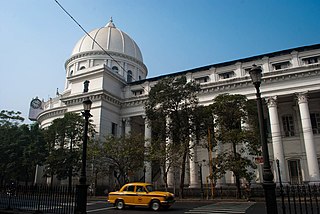
The General Post Office, Kolkata is the central post office of the city of Kolkata, India, and the chief post office of West Bengal. The post office handles most of the city's inbound and outbound mail and parcels. Situated in the B. B. D. Bagh area, the imposing structure of the GPO is one of the landmarks in the city.

Kalikata was one of the three villages which were merged to form the city of Kolkata in India. The other two villages were Gobindapur and Sutanuti. Job Charnock, an administrator with the British East India Company is traditionally credited with the honour of founding the city. He settled in the village of Sutanuti.

Gobindapur was one of the three villages which were merged to form the city of Calcutta in late 17th century. The other two villages were Kalikata and Sutanuti. Job Charnock, an administrator with the British East India Company is traditionally credited with the honour of founding the city. While Kalikata and Sutanuti lost their identity as the city grew, Gobindapur was demolished for the construction of new Fort William.
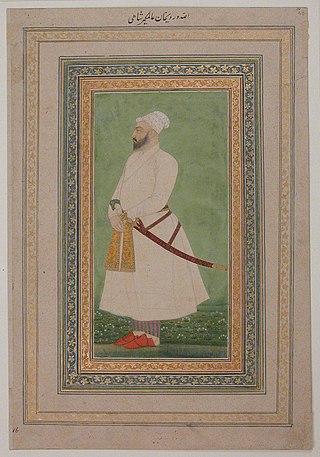
Alivardi Khan was the Nawab of Bengal from 1740 to 1756. He toppled the Nasiri dynasty of Nawabs by defeating Sarfaraz Khan in 1740 and assumed power himself.
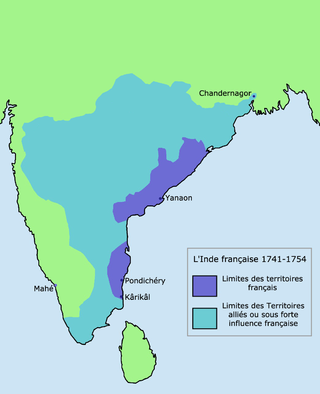
The siege of Calcutta was a battle between the Bengal Subah and the British East India Company on 20 June 1756. The Nawab of Bengal, Siraj ud-Daulah, aimed to seize Calcutta to punish the company for the unauthorised construction of fortifications at Fort William. Siraj ud-Daulah caught the Company unprepared and won a decisive victory.
Roger Drake was a British administrator in the East India Company. He served as President of Fort William in Bengal between 1752 and 1756 and was later reprimanded for his actions during the Siege of Calcutta in 1756.
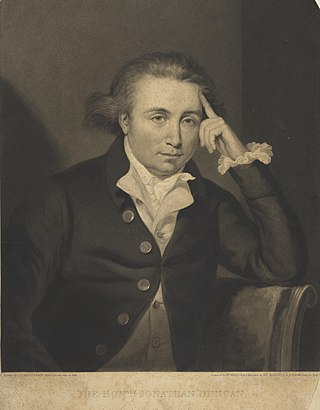
Jonathan Duncan was Governor of Bombay from 27 December 1795 until his death in 1811.
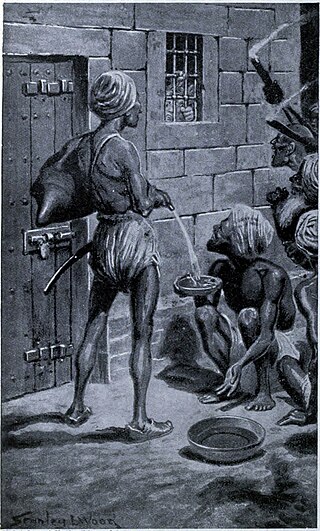
The Black Hole of Calcutta was a dungeon in Fort William, Calcutta, measuring 14 by 18 feet, in which troops of Siraj-ud-Daulah, the Nawab of Bengal, held British prisoners of war on the night of 20 June 1756. John Zephaniah Holwell, one of the British prisoners and an employee of the East India Company, said that, after the fall of Fort William, the surviving British soldiers, Indian sepoys, and Indian civilians were imprisoned overnight in conditions so cramped that many people died from suffocation and heat exhaustion, and that 123 of 146 prisoners of war imprisoned there died. Some modern historians believe that 64 prisoners were sent into the Hole, and that 43 died there. Some historians put the figure even lower, to about 18 dead, while questioning the veracity of Holwell's account itself.

Captain Daniel Woodriff was a British Royal Navy officer and navigator in the late-eighteenth and early-nineteenth centuries. He made two voyages to Australia. He was Naval Agent on the convict transport Kitty in 1792 and, in 1803, the captain of HMS Calcutta for David Collins' expedition to found a settlement in Port Phillip.

Sealdah is a neighbourhood of Central Kolkata in Kolkata district in the Indian state of West Bengal.
Events in the year 1756 in India.















